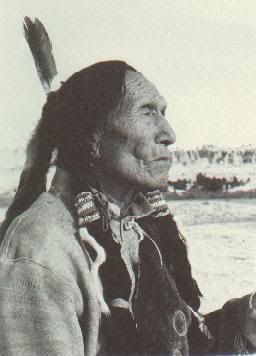Native American Legends
Big Turtle- A Wyandot (Huron) Legend
Many years ago the world had two parts. Animals lived in
the lower part, which was completely covered in water and
had no land or soil. Above was the Sky World, where the sky
people lived. The Sky World had lots of soil, with beautiful
mountains and valleys. One day a girl from the Sky World
went for a long walk and became very tired.
"I'm so tired, I need to rest," she said. She sat down under
the spreading branches of an apple tree and quickly fell
asleep. Suddenly, there was a rumbling sound like thunder
and the ground began to crack. A big hole opened up next
to the apple tree.
"What's happening?" screamed the frightened girl. She tried
to move but it was too late. She and the tree slid through
the hole and tumbled over and over towards the watery
world below.
"Help me! Help me!" screamed the girl. Luckily two swans
were swimming below and saw the girl tumbling down from
the sky. "Come on!" yelled one swan. "Let's catch her before
she hits the water." "Okay!" yelled the other. The swans
spread their wings together and caught the girl on their soft
feather backs. "Whew! That was lucky," said the girl. "But
what do I do now? I can't get back up to the Sky World and
I can't stay on your backs forever."
"We'll take you to Big Turtle," said the swans. "He knows
everything." After hearing what happened, the Big Turtle
called all the animals in the water world to a meeting. He
told them an old story about soil being found deep under
the water. "If we can get some of that soil, we can build
an island on my back for you to live on," said the Big Turtle.
"Sounds good to me," said the young girl.
The Otter, Beaver and Muskrat started arguing over whom
would dive for the soil. "I'll go," said the sleek Otter, brushing
his glossy fur. "No! I'll go," said Beaver, slapping the water
with his big flat tail. "I'm the best swimmer," said Muskrat "I'll go."
"Aaaachooo!" sneezed the young girl." Guys, guys, would just
one of you go. These swan feathers are getting up my nose
and making me sneeze."
"Sorry" said the swans.
"That's alright," said the young Sky girl.
Then Toskwaye the little Toad popped up out of the water.
"I'll go. I can dive very deep," she said. The other animals
started laughing and pointing at Toskwaye. "You! You're
too small and ugly to help." Cried the others, laughing.
"Be quiet!" said Big Turtle in a loud, stern voice. "Everyone is
equal and everyone will have a chance to try". The sleek Otter
smoothed his glossy fur, took a deep breath and slid into the
water. He was gone for a long time before he came up gasping
for air. "It was too deep," he said. "I couldn't dive that far."
"Now it's my turn," said Beaver. He slapped the water with his
tail as he disappeared. After a long time he came to the surface
again. "It's too far" he gasped. "No one can dive that deep.
" Muskrat tried next and failed.
"Aaaachoo!" sneezed the young girl. "This is not looking good."
"Now it's my turn," said little Toskwaye the Toad. She took a
deep breath and jumped into the water. She was gone a very
long time and everyone thought they wouldn't see her again.
Suddenly Otter pointed at the water, shouting, and "Look,
look bubbles!" Toskwaye's small, ugly face appeared through
the water. She spat a few grains of soil onto the Big Turtle's
back, then fell back into the water - dead.
The Turtle ordered the others to rub the soil grains and spread
them around on his shell. The grains grew and grew, until a
large island was formed - big enough for the girl to live on. It
grew into our world, as we know it today. And the descendants
of the Sky girl became the Earth's people.
Today, some people say the whole world still rests on Big Turtles
back. When he gets tired and changes his position,
we have earthquakes.
Toad has not been forgotten either.
American native Indians call her "Mashutaha",
which means 'Our Grandmother'.
No one is allowed to harm her.
First People of America and Canada - Native American Indians. Turtle Island. Legends, Treaties, Clipart.































